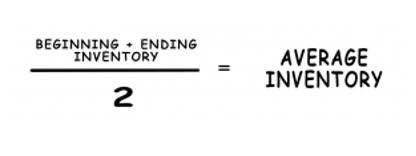
It is about all transactions, what are retained earnings events, balances, and other matters that should be disclosed in the financial statements and confirms their appropriate disclosure. It refers to the fact that the assets, liabilities, and equity balances mentioned in the books exist at the end of the accounting period. This assertion is critical for the asset accounts because it reflects the strength of the company. Audit procedures for obtaining audit evidence are usually performed in the audit evidence gathering stage that may include both test of controls and substantive procedures.

What are the 5 steps of financial reporting?
Also, it is important that auditors use audit sampling in a way that all sampling units in the population have a chance of being selected. Observation is different from physical examination of assets as the physical examination of assets is actually the same as counting assets while observation focuses only on the client’s activities. This metric indicates that a business has enough working capital to cover all its bills and will not need additional funding.

What are the three 3 accounting values?
Fixed assets may include lands, buildings, furniture and fixtures, and equipment, which we will test in the audit of fixed assets. The audit process is inevitably a very important process during the financial year Outsource Invoicing of the company. It is considered to be crucial from the perspective of the stakeholders, as well as for internal validation of the company, that everything is up to the mark. Year-end audits are time-consuming and cumbersome in nature, and therefore it requires the auditor to ensure that proper planning is undertaken in order to ensure that the process is executed in a smooth manner. Audit assertions form to be the basis of the entire audit planning and procedural phase.
- For account balances, it checks the completeness of asset, liability, and equity balances.
- This is especially true if the client has incentives to overstate revenues.
- Auditors evaluate the design and implementation of controls and perform tests to determine if they are operating effectively.
- Auditors verify whether all material information has been recorded accurately and that no significant transactions have been omitted.
- The rights and obligations assertion focuses on whether the entity has legal ownership or control over its assets and whether the reported liabilities are valid obligations.
Identifying Entity-Level Controls

The four major categories of assertions relate to classes of transactions, account balances at period end, presentation and disclosure, and events and conditions during the period. In addition, he consults with other CPA firms, assisting them with auditing and accounting issues. GAAP is a common set of accounting principles, standards, and procedures that public companies in the U.S. must follow when they compile their financial statements. The balance sheet provides a snapshot of an entity as of a particular date.

Previously incurred costs should not be a part of the current year’s payroll expense. For example, it should be made sure that salaries and wages cost in respect of all personnel have been fully accounted for. It is very important to have audit teams that are aware of their role in the rest of the organization. This can be done by holding regular “audit-outs” where the team can go away and do a separate audit. It can also be done by having regular “audit get-togethers” with other members of the team.
Understanding Financial Statement Assertions
For example, inventory is valued at the lower of cost and NRV (net realizable value) when it is purchased from a supplier. This is an indication of a valuation, and the accountant must verify this assertion in evaluating the whole presentation of financial statements in its entirety. This claim indicates that all transactions have been reported in their period, or in the proper timeframe in some cases. Examples include material costs that are recorded in the financial statements and that are related to a particular accounting period. Alternatively, the activities are accurate during the period in which they happened. It essentially guarantees that the transactions reflected in the Financial Statements comprise of transactions that are solely related to the present financial year, as opposed to activities that are not.
Financial Statement Assertions

On the other hand, the valuation issue is 5 audit assertions usually related to management estimate which involves the depreciation of the assets. Existence and valuation assertions are usually the most relevant assertions in the audit of fixed assets. The company may intend to overstate the value of fixed assets rather than understate. This assertion indicates that transactions or products have been categorized and documented in the appropriate accounts or classifications, respectively. For instance, salaries paid to office personnel are classed and reported as administrative expenditures, but payments made to products department employees are categorized and reported as a manufacturing cost.
- When accounting for environmental and other related contingencies, adequate disclosure is crucial because the criteria for recording a liability are frequently not present.
- Likewise, auditors may use different sampling methods to determine their sample.
- Accuracy, valuation and allocation – means that amounts at which assets, liabilities and equity interests are valued, recorded and disclosed are all appropriate.
- When performing audit procedures and sampling, auditors usually need to determine what is their sample of the records or documents to review.
- If management is committing fraud in generating financial statements, it is possible that all of the preceding assertions will prove to be false.
- They may be explicit (i.e., stated directly) or implicit (i.e., implied rather than directly stated).
- External audits, therefore, allow stakeholders to make better, more informed decisions related to the company being audited.
- It also needs to be ensured that the transactions actually pertain to the given entity, only.
- For example, when a financial statement has a cash balance of $605,432, the business asserts that the cash exists.
- In this case, trend and ratio analysis are the two procedures that we usually use in the preliminary analytical procedures for the audit of fixed assets.
- So, magnitude (is the risk related to a material amount?) and likelihood (is it reasonably possible?) are both considered.
- It also provides a benefit to management by identifying flaws in internal control or financial reporting prior to its review by external auditors.
Completeness is a crucial audit assertion since it relates to the balance sheet and income statement. For example, they must ensure companies have recognized all items in fixed assets that they must have. For that, auditors may use various tests and audit procedures to ascertain the completeness of those assets. Accuracy involves ensuring whether amounts and other data have been recorded appropriately in the financial statements. When testing the accuracy assertion, auditors need to ensure that the client has presented all the information accurately.
Leave a Reply